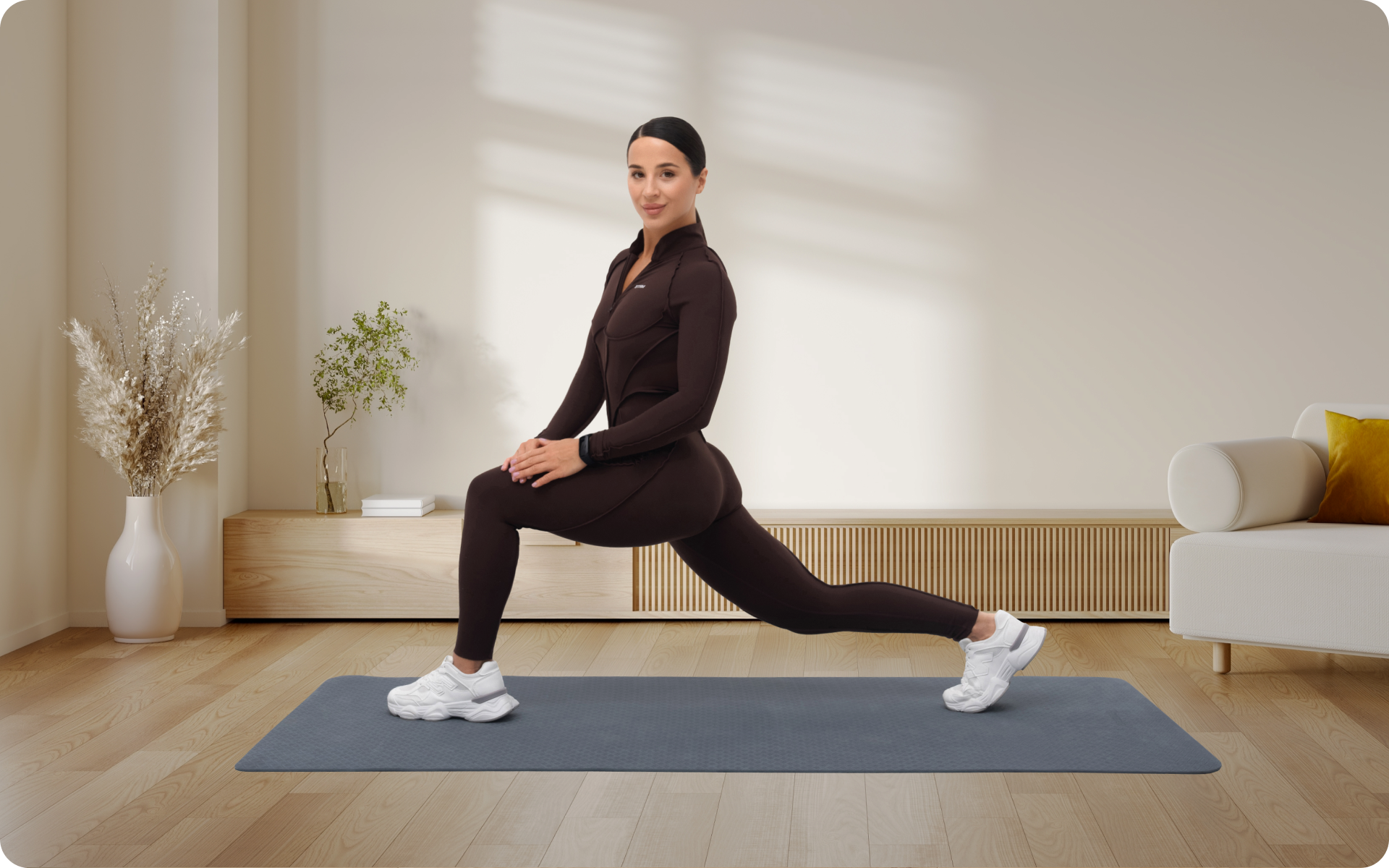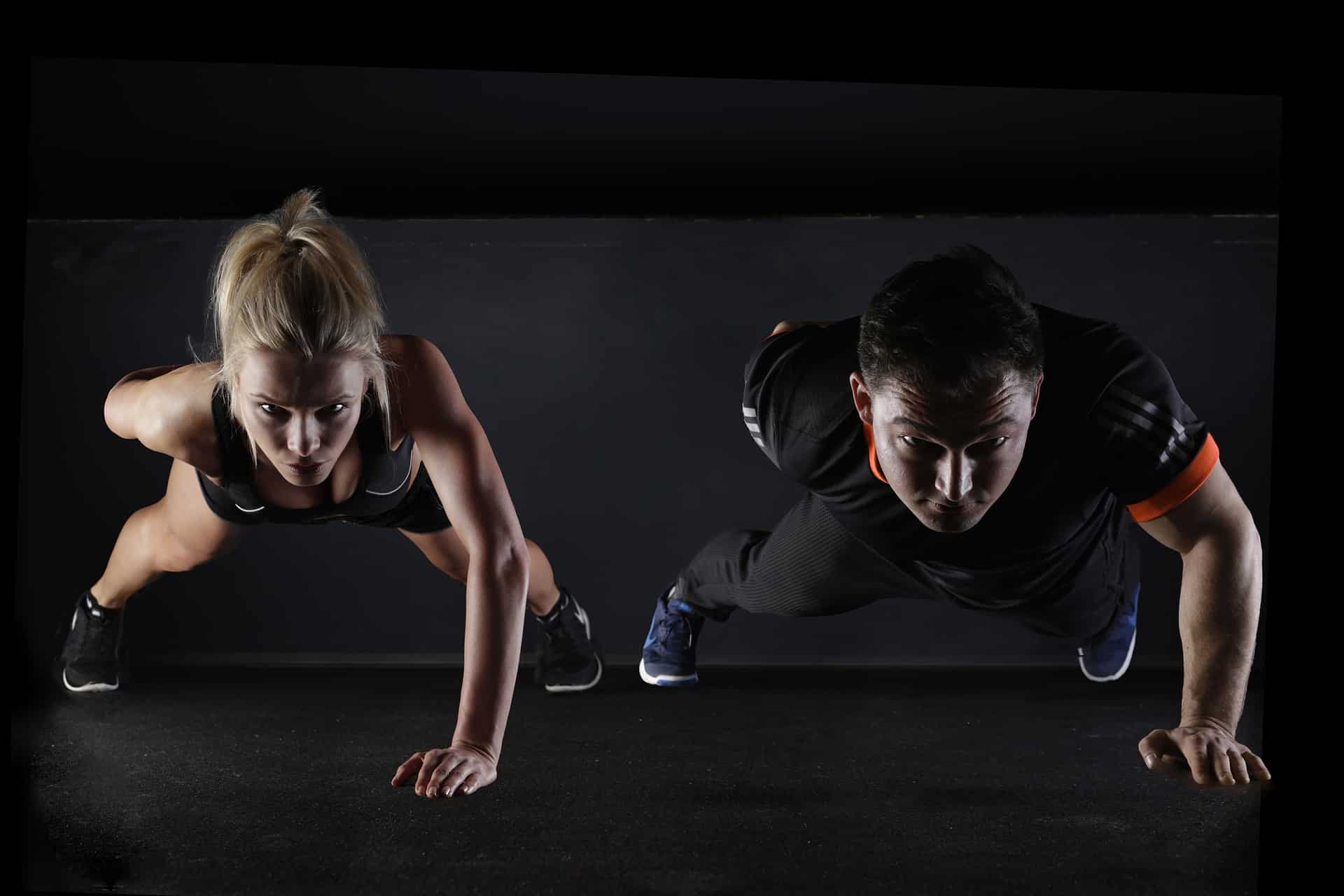High Intensity Interval Training (HIIT) is a type of exercise that is designed to increase your calorie burn and improve cardiovascular health in a short amount of time. The idea behind HIIT is to alternate between periods of intense activity and brief rest or recovery periods. On a physiological level, HIIT jump rope workouts can help to improve your metabolism and burn calories more efficiently.Jump roping is a great way to get into an effective HIIT routine. Not only is it easy to set up (all you need is a jump rope!), but the exercise itself has many benefits that make it an excellent choice for HIIT workouts. If you’re thinking of switching up your workout routine with HIIT jump rope workouts, you’ve come to the right place. This is a primer on the benefits of HIIT jump rope workouts and some helpful tips on how to design your own.
Get your personalized
meal plan!
Is Jump Rope Good Cardio?
Yes, jumping rope is an excellent form of cardiovascular exercise. Cardio is simply any exercise that elevates your heart rate. Jumping rope does just that and, in the process, sets in motion a number of physiological responses that lead to improved fitness and health (2).
Is Jumping Rope Good For You?
What does jumping rope do? Well, it would be easier to answer what jumping rope doesn’t do, as it is one of the most comprehensive exercises you can partake in. Research shows a host of health benefits to jumping rope:
A Full-Body Exercise
Jumping rope works the whole body, engaging several muscle groups simultaneously. It helps build strength in the upper and lower body while also improving coordination and balance (1). The arms are engaged when turning the rope and the feet must jump quickly and accurately to avoid tripping up on it.
A Weight-Bearing Exercise
Jumping rope is a weight-bearing exercise, meaning it works against the force of gravity. With each jump, your bones and muscles must work to support and lift your entire body weight. This makes jumping rope a great way to build strength in the legs, hips, and core muscles (6).
Anaerobic Benefits
Anaerobic exercise is any type of intense exercise that doesn’t rely on oxygen for energy. What this means is that your body heart rate must rapidly increase and remain elevated while you exercise in order to keep up with the physical demands of the activity.
The result is improved stamina and endurance. Jumping rope is an excellent way to get a quick burst of anaerobic exercise. This is especially true when performing interval training, where you alternate bursts of intense exercise with short periods of rest (more on that in our next section discussing HIIT jump rope workouts).
Read More: HIIT Sprint Workout: Benefits & How To Get Started
A Great Workout For Your Heart
Jumping rope is a great way to strengthen your cardiovascular system (1). The frequent, rhythmic motion of jumping rope puts stress on your heart and lungs, causing them to work harder. This in turn helps improve their overall strength and efficiency.
No wonder the American Heart Association recommends jumping rope as an ideal form of cardio exercise (7).
Calorie Burning
Does jumping rope burn fat? Yes, it does! Jumping rope is an excellent way to burn calories and lose weight (5). How many calories does jumping rope burn? Depending on the intensity of your jump rope workout, you can burn anywhere from 300 to 600 calories in a 30-minute session. This makes jumping rope an efficient and effective way to get leaner and healthier.
Balance And Coordination Training
Jumping rope is more than just a calorie-burning exercise—it’s also great for improving balance and coordination (1). Jumping rope requires precise timing of your feet and arms, as well as the ability to keep your body balanced and stable while jumping. All this improves your coordination over time, making you less prone to falls and clumsiness.
Better Awareness of Your Body
Body awareness aka proprioception is the ability to be conscious of how your body moves in space. It means you know where your body is in relation to other objects, and can make subtle adjustments with ease.
Think of it as the internal gyroscope that helps you maintain balance and stay upright. Regularly jumping rope can help improve this skill and make your body more responsive to external forces.
What’s A Jump Rope HIIT Workout?
HIIT stands for high-intensity interval training, and it’s a great way to get maximum benefits out of your workout in the least amount of time (4). A jump rope HIIT workout consists of alternating short bursts of quick jumping (at least 80 jumps per minute, but this may vary depending on your fitness level) with short periods of rest (usually around 30 seconds to 1 minute).
The idea behind a HIIT workout with jump rope is to:
- Do more in less time – if you can maintain a high intensity for the entire duration of your workout, you can get more done in less time
- Challenge yourself – HIIT workouts push your body to its limits, giving you a good workout without having to spend hours in the gym
- Burn more fat – HIIT exercises burn fat faster than other types of exercise, making them great for weight loss
- Increase endurance – HIIT workouts help improve your overall strength and stamina, so you can go longer and harder for your next workout
- Break the monotony – a HIIT jump rope workout is much more fun than your standard steady-state cardio session, like jogging on a treadmill.
- Trigger post-workout calorie burn – HIIT workouts can help you continue to burn calories even after your workout is done.
BetterMe app will kick you out of the mental funk, shake off your extra weight, rid you off your energy-zapping habits, and help you sculpt the body of your dreams. Intrigued? Hurry up and change your life for the better!
How To Design Your Own Jump Rope HIIT Workout Plan
Good news! You don’t need a fancy workout plan to get started with jump rope HIIT. All you need is a jump rope and some creative ideas for mixing up your intervals. You’ll also need to bear the following in mind:
Your Form Matters Way More Than The Intensity
Sure, it’s called high INTENSITY interval training. So right off the bat, you’re looking to break a sweat as fast as possible, run out of breath and really get that heart rate up. But before you start going HAM, take a moment to make sure your form is spot on.
Why? Because if you don’t you run the risk of injury, which can derail your progress in no time. Not to mention, the benefits you’d ordinarily reap from such a workout (better stamina, improved coordination and balance etc.) won’t be as effective if you’re doing the jump rope wrong.
You’ll soon feel some discomfort and fatigue in your wrists and shoulders, then wonder why your jumps aren’t feeling as powerful. To save yourself this trouble, work on perfecting your form before taking it up a notch with some HIIT.
What’s A Good Jumping Form? Use This Checklist:
- Feet: Keep your feet together at all times and jump lightly, using only the balls of your feet. They should be perpendicular to the floor and in line with your torso.
- Knees: Bend them slightly on each jump for a softer, more fluent landing.
- Hips: Keep your hips straight and don’t let them swing around from side to side. They should remain still, only slightly bent at the time of landing.
- Arms: Keep your elbows close to your body and wrists relaxed, using just your arms to brush the rope lightly over your head. Keep your arms slightly bent and drive them up and down.
- Shoulders: Relaxed and back, not scrunched up around your ears
- Head: Looking straight ahead, with your chin lifted slightly
You’ll Need To Measure The Work And Rest Intervals
Once you have your form down, it’s time to get into the technical stuff. The idea is to alternate between short periods of intense exercise (the work interval) and rest intervals.
The exact ratio between the two depends on your level of fitness, but as a rule of thumb, beginners should try to keep the work intervals at 30 seconds – 1 minute or less, and the rest intervals at 30 seconds or longer.
Time isn’t the only way to measure your work or rest intervals (although it may be the simplest) – you can also measure them by how many jumps or reps you do. For example, a beginner might aim for 4 sets of 15-second work intervals, followed by 30-second rest intervals.
A more intermediate exerciser might aim for 2 sets of 45-second work intervals, followed by 60-second rest intervals.
Some jump ropes come with built-in timers that let you track your intervals automatically. Whatever system works for you, though, the key is to manage the intensity of each HIIT session by measuring and tracking your work and rest intervals.
Read More: HIIT Workout Weight Loss: Tips To Get Started & Simple Exercises To Try
You’ll Need To Break Up Your HIIT Jump Rope Sessions
One of the main criticisms of intense workouts is that they are hard to maintain consistently over a long period of time. Especially when you perform them daily, without taking a break. However, HIIT jump rope workouts don’t need to be done every single day – in fact, it’s better if you take a rest day or two between sessions.
The key is to break up your HIIT jump rope workouts with a day or two of low-intensity exercise, like a leisurely stroll or yoga class. This will help keep your muscles from being overworked and give you time to recover, so you can come back to your HIIT workouts feeling refreshed and ready to go.
Rest days are also important for maintaining your motivation. If you’re feeling burnt out or dreading HIIT, take a break and come back when you’re ready to give it your all.
You Should Consider A Regular Stretching Routine
Stretching is an important part of any workout routine, but it’s especially crucial for HIIT jump rope workouts. Stretching before and after your workouts can help your body recover faster and reduce the risk of injury.
Focus on stretching the muscles you’ll be using during your HIIT jump rope sessions, like the calves, quads, glutes and shoulders. Dynamic stretches, like lunges and arm circles, are often recommended before HIIT workouts. And static stretches, such as forward folds and hamstring stretches, should be done after your workouts to help relax the muscles and prevent cramping.
Slow But Sure Wins The Prize
Like most forms of intense exercise, HIIT jump rope needs you to take a measured, gradual approach to ramping up your intensity. Start with short, low-intensity sessions and gradually increase the duration and intensity of your workouts as you get stronger. This will help prevent injury and ensure that you’re getting the most out of your HIIT workouts.
Lean and toned up body isn’t just a far-fetched fantasy. Check out the BetterMe app and watch it propel your weight loss journey into high gear!
Sample Jump Rope HIIT Workout For Beginners
This is a 3-day sample jump rope HIIT workout for beginners. Each day, you’ll start off with some dynamic stretches to warm up the muscles and prepare them for the workout ahead. You’ll then jump rope for 30 seconds, rest for 15 seconds, and repeat this 8 times. Afterward, you’ll do a series of static stretches to cool down the body.
Day 1:
- Dynamic Stretches: Chest stretch, shoulder rolls, torso twists, and arm circles
- Jump Rope HIIT: Jump rope for 30 seconds, rest for 15 seconds; repeat 8 times. Recommended speed: moderate, where you can still maintain form.
- Static Stretches: Standing quad stretch, standing calf stretch, shoulder/back stretch
Day 2:
- Dynamic Stretches: Arm swings, jumping jacks, high knees and butt kicks
- Jump Rope HIIT: Jump rope for 30 seconds, rest for 15 seconds; repeat 8 times. Recommended speed: moderately fast, where you can still maintain form.
- Static Stretches: Standing quad stretch, standing calf stretch, shoulder/back stretch
Day 3:
- Dynamic Stretches: Arm swings, jumping jacks, high knees and butt kicks
- Jump Rope HIIT: Jump rope for 30 seconds, rest for 15 seconds; repeat 8 times. Recommended speed: fast, where you can still maintain form.
- Static Stretches: Standing quad stretch, standing calf stretch, shoulder/back stretch.
The Bottom Line
Jump rope HIIT is a great way to get your heart rate up, work on cardiovascular endurance and agility, and tone the muscles of the lower body. Be sure to warm up and cool down before and after each workout, as dynamic stretches can help prepare your muscles for the workout ahead and static stretches help to elongate and cool down the muscles.
DISCLAIMER:
This article is intended for general informational purposes only and does not serve to address individual circumstances. It is not a substitute for professional advice or help and should not be relied on for making any kind of decision-making. Any action taken as a direct or indirect result of the information in this article is entirely at your own risk and is your sole responsibility.
BetterMe, its content staff, and its medical advisors accept no responsibility for inaccuracies, errors, misstatements, inconsistencies, or omissions and specifically disclaim any liability, loss or risk, personal, professional or otherwise, which may be incurred as a consequence, directly or indirectly, of the use and/or application of any content.
You should always seek the advice of your physician or other qualified health provider with any questions you may have regarding a medical condition or your specific situation. Never disregard professional medical advice or delay seeking it because of BetterMe content. If you suspect or think you may have a medical emergency, call your doctor.
SOURCES:
- 7 Health Benefits of Jumping Rope (2017, nih.gov)
- Effects of Caloric Restriction and Rope-Skipping Exercise on Cardiometabolic Health: A Pilot Randomized Controlled Trial in Young Adults (2021, nih.gov)
- Is high-intensity interval training a time-efficient exercise strategy to improve health and fitness? (2014, nih.gov)
- The effects of dance music jump rope exercise on pulmonary function and body mass index after music jump rope exercise in overweight adults in 20’s (2017, nih.gov)
- The Influence of Different Rope Jumping Methods on Adolescents’ Lower Limb Biomechanics during the Ground-Contact Phase (2022, nih.gov)
- What Exercise is Right for Me? (n.d., heart.org)












